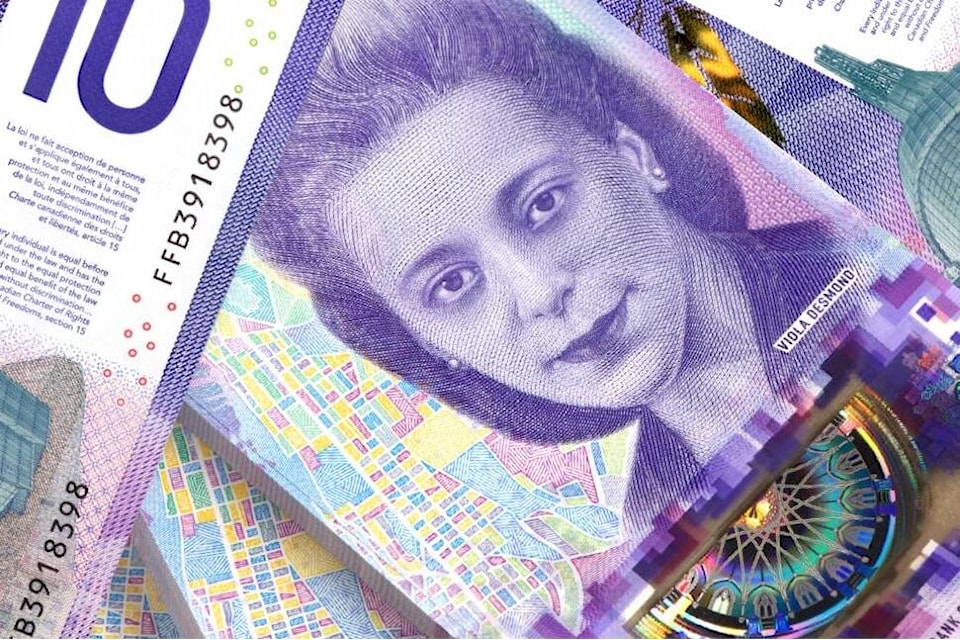The face of King Charles III will soon be seen on some Canadian money.
The image will appear on coins and the $20 banknote. While the monarch’s image on the $20 banknote in keeping with Canadian tradition, it seems out of place when viewed with the other faces on Canadian banknotes. Charles III is Canada’s head of state and his title includes King of Canada. However, this role is largely symbolic. The monarch reigns but does not rule.
For many years, Sir John A. Macdonald, the first prime minister of Canada, was on the $10 bill. Sir Wilfrid Laurier, the eighth prime minister, is on the $5 bill, William Lyon Mackenzie King, the longest-serving Canadian prime minister is on the $50 bill and Robert Borden, the prime minister through much of the First World War is on the $100 bill.
In recent years, others have been featured as well.
In 2017, a commemorative banknote issued for the 150th anniversary of Confederation featured four faces, but only one was a former prime minister. In addition to Macdonald, the people on this bill are Sir George Éteinne Cartier, Agnes Macphail and James Gladstone (Akay-na-muka) — each of them instrumental in making Canada what it is today. Cartier brought Quebec into Confederation, Macphail was a champion of human rights and was the first woman elected to the House of Commons. Gladstone was the first Indigenous senator in the Canadian Senate.
In 2018, the vertical $10 bill, featuring the image of Viola Desmond, was circulated. Desmond is honoured on this bill because challenged racial segregation laws in Canada in 1946.
At present, a new $5 bill is in the works. At present, there are eight people shortlisted for this bill. None are in the royal family and none have served as prime minister.
The criteria for the new $5 bill and other bills in the Bank of Canada’s NOTE-able Canadians series are simple. Those featured on money must have demonstrated outstanding leadership, achievement or distinction in any field, benefiting the people of Canada or in the service of this country. They must have been deceased for at least 25 years and they may not be a fictional character.
This means people like author Margaret Atwood, hockey player, coach and commentator Don Cherry, hockey player and coach Wayne Gretzky and environmentalist David Suzuki are not eligible, since each is still alive.
Musician Gord Downie of the Tragically Hip, actor Gordon Pinsent, diplomat Kenneth Taylor and former prime minister Pierre Trudeau are also not eligible, as their deaths occurred more recently than 25 years ago.
Anne of Green Gables also cannot appear under the Bank of Canada’s criteria since she is a fictional character.
Still, there are plenty of Canadians who have made remarkable achievements over the years. The poem, In Flanders Fields, was written by a Canadian. Two Canadian researchers discovered insulin, which has helped in the treatment of those with diabetes. Many others have also made significant contributions to this country.
A total of 600 names were submitted for the $5 bill and there is a shortlist of eight people, each with unique accomplishments.
Depicting the faces of Canadians on our banknotes does not affect Canada’s position as a Commonwealth realm. Our country remains a constitutional monarchy, no matter who is shown on banknotes.
The people who have shaped Canada, along with those who have contributed to this country’s reputation on the international stage, deserve to be recognized for what they are doing.
Showing their faces on our money is one way of giving them this recognition, and it is one way of telling our country’s story.
John Arendt is the editor of the Summerland Review.
To report a typo, email:
news@summerlandreview.com.
news@summerlandreview.com
Like us on Facebook and follow us on Twitter.
